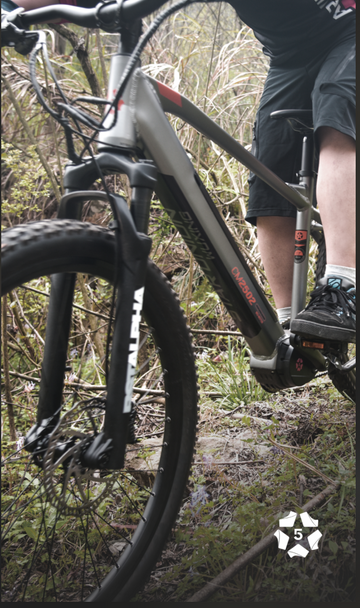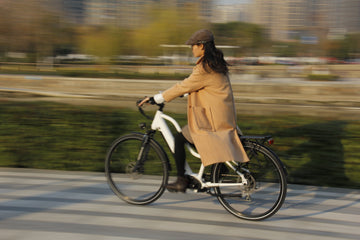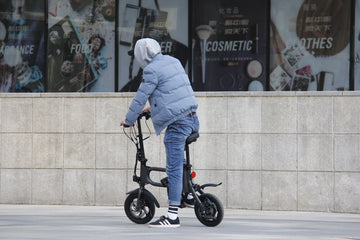
Selecting the correct brake pad material is crucial for achieving the best performance. There are three main types of disc brake pads:
1. Resin (Organic) Brake Pads
Best for: Casual riders, dry conditions, smooth terrain.
Pros:
✔ Quieter operation with minimal noise.
✔ Better initial bite and modulation.
✔ Less wear on rotors.
Cons:
✖ Wears out faster, especially in wet or muddy conditions.
✖ Overheats more easily on long descents.

2. Sintered (Metallic) Brake Pads
Best for: Aggressive riding, wet/muddy conditions, high-speed descents.
Pros:
✔ Longer lifespan and better durability.
✔ Superior performance in extreme conditions (wet, mud, and heat).
✔ Handles high temperatures without losing braking power.
Cons:
✖ Noisier than resin pads, especially in wet conditions.
✖ Causes more wear on rotors.
3. Semi-Metallic Brake Pads
Best for: Versatile riding styles, mixed conditions.
Pros:
✔ Balanced performance between resin and sintered pads.
✔ Good durability without excessive rotor wear.
✔ Works well in various weather conditions.
Cons:
✖ Not as quiet as resin pads.
✖ Wears out faster than full-metal pads in extreme conditions.

How to Pair the Best Brake Pads with Your Riding Style
|
Riding Style |
Recommended Brake Pads |
Why? |
|
Casual Road/Commuter |
Resin (Organic) |
Quiet, smooth braking, minimal wear. |
|
Cross-Country (XC) |
Semi-Metallic |
Lightweight, good durability, balanced performance. |
|
Trail/Enduro |
Sintered (Metallic) |
Better heat resistance, powerful stopping force. |
|
Downhill (DH)/Gravity |
Sintered (Metallic) |
Extreme durability, high heat tolerance. |
|
Wet/Muddy Conditions |
Sintered (Metallic) |
Superior grip and longevity in wet weather. |
|
All-Around Performance |
Semi-Metallic |
Versatile, balances noise, wear, and performance. |
Matching the Right Rotors with Your Brake Setup
Brake rotors also play a key role in achieving optimal braking performance. When choosing rotors, consider:
Rotor Size Matters
· 160mm rotors – Best for lightweight riders, XC, and road bikes.
· 180mm rotors – A balanced choice for trail and enduro riders.
· 200mm+ rotors – Ideal for downhill, e-bikes, or heavier riders needing maximum stopping power.
Larger rotors provide better heat dissipation and stopping power but add weight. If you frequently ride in steep terrain, consider upgrading to bigger rotors.

Ventilated or Standard Rotors?
· Standard Rotors – Common and effective for most riding conditions.
· Floating Rotors – Better heat dissipation, reducing the risk of warping under heavy braking.
· Ice-Tech or Ventilated Rotors – Used in high-performance braking systems (e.g., Shimano Ice-Tech) for enhanced cooling.
Additional Tips for Optimal Braking Performance
✔ Bed-in Your Brake Pads – When installing new pads, perform a series of gradual stops to transfer a thin layer of material onto the rotor for optimal braking performance.
✔ Keep Rotors and Pads Clean – Avoid contamination from oil or grease, which can reduce braking efficiency. Use isopropyl alcohol or a brake cleaner to clean the rotors and pads.
✔ Check Pad Wear Regularly – Replace pads before they become too thin (less than 1mm) to prevent rotor damage.
✔ Monitor Brake Fluid Levels – If braking power feels inconsistent, check for air bubbles in the hydraulic system and bleed the brakes if necessary.

Selecting the right hydraulic disc brakes and brake pads is essential for ensuring a safe and efficient riding experience. Whether you’re a casual rider, an aggressive downhill racer, or a commuter, choosing the correct brake pads and rotors tailored to your riding style will significantly enhance your bike’s braking performance.
For high-quality hydraulic disc brakes, brake pads, and rotors, check out our Shopify Store. We offer a wide range of premium braking components to keep your ride safe, smooth, and high-performing in all conditions!




